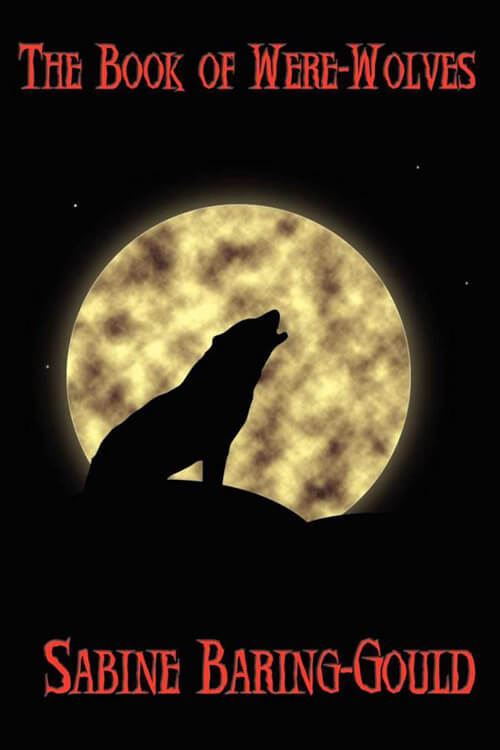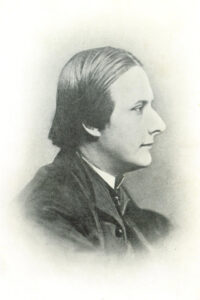
The Book of Were-Wolves
“Picou tells me that he saw the werewolf only this day se’nnight,” said a peasant; “he was down by the hedge of his buckwheat field, and the sun had set, and he was thinking of coming home when he heard a rustle on the far side of the hedge. He looked over, and there stood the wolf as big as a calf against the horizon, its tongue out and its eyes glaring like marsh fires. Mon Dieu! Catch me going over the Marais tonight. Why, what could two men do if that wolf-fiend attacked them?”
“It is tempting Providence,” said one of the village elders;” no man must expect the help of God if he throws himself wilfully in the way of danger. Is it not so, M. le Curé? I heard you say as much from the pulpit on the first Sunday in Lent, preaching from the Gospel.”
“That is true,” observed several, shaking their heads.
“His tongue hanging out, and his eyes glaring like marsh fires!” said Picou’s confidant.
“Mon Dieu! If I met the monster, I should run,” quoth another.
“I quite believe you, Cortrez; I can answer for it that you would,” said the mayor.
“As big as a calf,” threw in Picou’s friend.
“If the loup-garou were only a natural wolf, why then, you see?”—the mayor cleared his throat—“You see, we should think nothing of it, but, M. le Curé, it is a fiend, a worse than fiend, a man-fiend, a worse than man-fiend, a man-wolf-fiend.”
“But what is the young monsieur to do?” asked the priest, looking from one to another.
“Never mind,” said I, who had been quietly listening to their patois, which I understood. “Never mind; I will walk back by myself, and if I meet the loup-garou, I will crop his ears and tail and send them to M. le Maire with my compliments.”
A sigh of relief from the assembly as they found themselves clear of the difficulty.
Read or download Book
Sabine Baring-Gould
Sabine Baring-Gould (28 January 1834 – 2 January 1924) of Lew Trenchard in Devon, England, was an Anglican priest, hagiographer, antiquarian, novelist, folk song collector, and eclectic scholar.
Biography.
His bibliography consists of more than 1,240 publications, though this list continues to grow. He is remembered mainly as a writer of hymns, the best-known being “Onward, Christian Soldiers” and “Now the Day Is Over”. He also translated the carols “Gabriel’s Message” and “Sing Lullaby” from Basque to English. His family home, the manor house of Lew Trenchard, near Okehampton, Devon, has been preserved as he had it rebuilt and is now a hotel.
Origins
Sabine Baring-Gould was born in the parish of St Sidwell, Exeter, on 28 January 1834. He was the eldest son and heir of Edward Baring-Gould (1804–1872), lord of the manor of Lew Trenchard, a Justice of the Peace and Deputy Lieutenant of Devon, formerly a lieutenant in the Madras Light Cavalry (resigned 1830), by his first wife, Sophia Charlotte Bond, daughter of Admiral Francis Godolphin Bond, Royal Navy. Sabine’s paternal grandfather was William Baring (died 1846), JP, DL, who in 1795 had assumed by royal license the additional surname and arms of Gould, following the terms of his inheritance of the manor of Lew Trenchard from his mother Margaret Gould, daughter and eventual heiress in her issue of William Drake Gould (1719–1767) of Lew Trenchard. The Gould family was descended from a confident John Gold, a crusader present at the siege of Damietta in 1217 who, for his courage, was granted in 1220 by Ralph de Vallibus an estate at Seaborough in Somerset. Margaret Gould was the wife of Charles Baring (1742–1829) of Courtland in the parish of Exmouth, Devon, whose monument survives in Lympstone Church. He was the 4th son of Johann Baring (1697–1748), of Larkbeare House, Exeter, a German immigrant apprenticed to an Exeter wool merchant, and younger brother of Francis Baring (1740–1810), and John Baring (1730–1816) of Mount Radford, Exeter. The two brothers established the London merchant house of John and Francis Baring Company, which eventually became Barings Bank. Sabine was named after the family of his grandmother, Diana Amelia Sabine (died 1858), wife of William Baring-Gould (died 1846), daughter of Joseph Sabine of Tewin, Hertfordshire, and sister of the Arctic explorer General Sir Edward Sabine.
Career
Because the family spent much of his childhood travelling around Europe, most of his education was by private tutors. He only spent about two years in formal schooling, first at King’s College School in London (then located in Somerset House) and then, for a few months, at King’s School, Warwick (now Warwick School). Here, his time was ended by a bronchial disease of the kind that was to plague him throughout his long life. His father considered his ill health a good reason for another European tour. In 1852, he was admitted to Cambridge University, earning a Bachelor of Arts degree in 1857 and then a Master of Arts in 1860 from Clare College, Cambridge. In September 1853, he informed Nathaniel Woodard of his desire to be ordained. He taught for only ten days at one of Woodard’s boys’ boarding schools in Sussex, Lancing College, but then moved to another, Hurstpierpoint College, where he stayed from 1857 to 1864. While there, he was responsible for several subjects, especially languages and science, and he also designed the ironwork of the bookcases in the boys’ library and painted the window jambs with scenes from the Canterbury Tales and The Faerie Queene.
He took Holy Orders in 1864 and, at age 30, became the curate at Horbury Bridge, West Riding of Yorkshire. While acting as a curate, he met Grace Taylor, the daughter of a millhand, then aged fourteen. In the next few years, they fell in love. His vicar, John Sharp, arranged for Grace to live with relatives in York for two years to learn middle-class manners. Baring-Gould, meanwhile, relocated to become perpetual curate at Dalton, near Thirsk. He and Grace were married in 1868 at Wakefield. Their marriage lasted until her death 48 years later, and the couple had 15 children, all but one of whom lived to adulthood. When he buried his wife in 1916, he carved the Latin Dimidium Animae Meae on her tombstone (“Half my Soul”).






